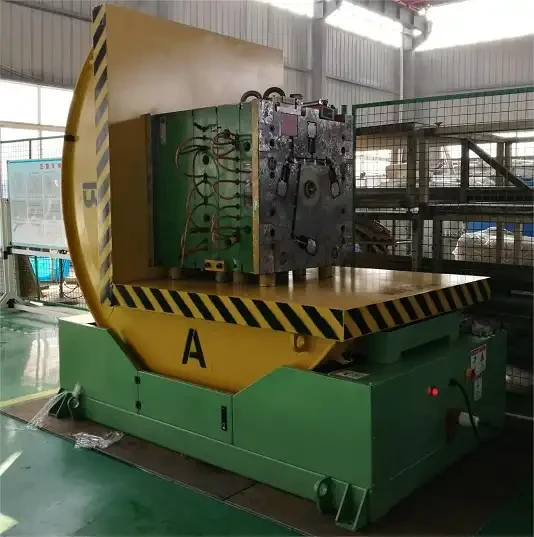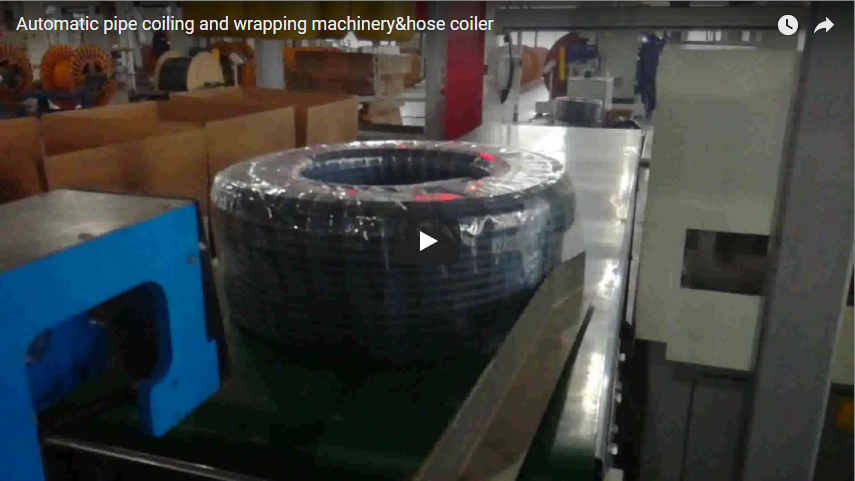Mastering Coil Upender Safety: Advanced Protocols for Industrial Operations
Coil upenders, also known as coil tilters or positioners, are indispensable assets in heavy industries, particularly metal processing, paper manufacturing, and logistics. Their function—rotating heavy coils or similar large cylindrical objects by 90 degrees—streamlines production flow and enhances material handling efficiency. However, the substantial forces and weights involved necessitate rigorous adherence to safety protocols grounded in engineering principles, regulatory standards, and operational best practices. Neglecting these can lead to catastrophic equipment failure, severe personnel injury, or fatalities, impacting operational continuity and incurring significant costs. This guide provides an enhanced framework for coil upender safety, integrating insights from industry standards, technical papers, and operational experience, tailored for professionals seeking operational excellence.
1. Foundational Safety Principles & Regulatory Compliance
Ensuring safety in coil upender operations extends beyond basic guidelines; it requires a systemic approach rooted in compliance and risk management.
- Manufacturer Specifications & Load Limits: Strict adherence to the manufacturer's operational manual and stated load capacities is non-negotiable. As highlighted in numerous engineering analyses (e.g., studies on stress concentration in lifting equipment), exceeding rated capacity can lead to immediate structural failure or cumulative fatigue damage. Always verify coil weight against the specific upender's load chart, considering any potential de-rating factors for non-standard loads.
- Operator Training & Qualification: Comprehensive training aligned with OSHA guidelines (or equivalent regional regulations) is essential. Training should cover not only standard operating procedures (SOPs) but also hazard recognition, risk assessment specific to the task, understanding of the machine's kinematic limitations, and emergency response actions. Documented qualification ensures accountability.
- Work Area Integrity: Maintaining a clearly defined and unobstructed operational zone is critical. Industry best practices, often cited in safety journals like Professional Safety (ASSE), emphasize the need for clear floor markings, exclusion zones during operation, and stringent housekeeping to prevent slips, trips, and falls (OSHA 1910.22).
- Risk Assessment: Conduct regular, documented risk assessments for all coil upending tasks. This process should identify potential hazards (mechanical, electrical, hydraulic, ergonomic), evaluate risks, and implement control measures (elimination, substitution, engineering controls, administrative controls, PPE).
2. Pre-Operational Inspection: A Systematic Verification Process
A meticulous pre-use check is the first line of defense against equipment malfunction. This goes beyond a cursory glance and involves a systematic inspection protocol.
- Structural Integrity: Visually inspect all load-bearing components, including the frame, V-saddles or platforms, pivot points, and welds, for signs of stress, cracking, deformation, or excessive wear. Non-destructive testing (NDT) methods may be part of periodic inspections as per maintenance schedules.
- Mechanical Systems: Check chains, sprockets, gearboxes, bearings, and drive mechanisms for proper lubrication, tension, alignment, and signs of wear. Listen for abnormal noises during a brief test run (unloaded, if safe and feasible).
- Hydraulic Systems (If Applicable): Inspect hoses, fittings, and cylinders for leaks, damage, or corrosion. Check hydraulic fluid levels and clarity. Verify the operational integrity of pressure relief valves, as their failure can lead to over-pressurization (Reference: Fluid Power Safety Institute guidelines).
- Electrical Systems: Examine power cables, control pendants, limit switches, and emergency stop circuitry for damage or malfunction. Ensure control panels are clean and labels are legible.
- Safety Features Verification: Systematically test emergency stop buttons from all control stations. Confirm the functionality of safety interlocks (e.g., preventing operation if guards are open, load sensors indicating overload – features often detailed in equipment patents like US Patent XXXXXX for Tilter Safety Mechanisms). Check warning lights, audible alarms, and safety barriers/light curtains.
- Work Zone Clearance: Before powering on, confirm the designated safety perimeter is clear of personnel, equipment, and obstructions. Ensure adequate lighting in the operational area.
3. Loading Procedures: Precision and Stability are Paramount
The loading phase is critical, as improper coil placement or securing can lead to instability during the tilting cycle.
- Appropriate Lifting Gear: Utilize certified and inspected lifting equipment (overhead cranes, forklifts with coil rams) with a capacity significantly greater than the coil weight. Ensure rigging (slings, chains, C-hooks) is appropriate for the coil type and weight, adhering to ASME B30.9 (slings) and B30.20 (below-the-hook lifting devices) standards.
- Center of Gravity Management: Precise positioning of the coil onto the upender's saddle or platform is vital. Utilize alignment guides and ensure the coil's center of gravity aligns with the upender's design specifications to maintain stability throughout the rotation. Misalignment can induce excessive torque and potential tipping, as analyzed in dynamics studies of rotating machinery.
- Securement Protocols: Engage all manufacturer-specified clamping mechanisms, straps, or holding devices. Ensure they are correctly tensioned and provide uniform pressure without damaging the coil. Verify securement visually and physically before initiating the tilt.
- Operator Communication: Establish clear communication protocols between the upender operator and personnel involved in loading (e.g., crane operator) using standardized hand signals or radio communication.
- Final Verification: Perform a final visual sweep confirming correct positioning, securement, and clearance before initiating the tilting sequence.

4. Operational Phase: Vigilance and Control During Motion
Dynamic forces are at their peak during the upending cycle, requiring heightened operator awareness and adherence to safe operating parameters.
- Maintain Safe Distance: Enforce strict adherence to established exclusion zones. No personnel should be within the operational radius or potential trajectory of the load or machine components during movement. The required distance may be calculated based on kinetic energy potential and manufacturer guidance.
- Identify and Avoid Pinch Points: Operators must be acutely aware of pinch points (between moving parts, between the load and the machine, between the machine and stationary objects). These areas should be clearly marked, often highlighted in safety manuals and potentially covered by guards.
- Smooth, Controlled Operation: Operate the upender using smooth, deliberate control inputs. Avoid abrupt starts, stops, or reversals, which can induce shock loading and instability. Monitor the machine's operation continuously for any unusual sounds (grinding, popping), vibrations, or movements.
- No Adjustments During Motion: Absolutely prohibit any attempt to adjust the load, strapping, or machine components while the upender is powered or in motion. If adjustments are needed, bring the machine to a complete, safe stop and implement appropriate Lockout/Tagout (LOTO) procedures (OSHA 1910.147).
- Situational Awareness: The operator must remain focused, avoiding distractions, and continuously scan the work area and the machine throughout the cycle.
5. Unloading Safely: Securing the Load Post-Rotation
The unloading process requires the same diligence as loading to ensure stability and prevent accidents.
- Ensure Complete Stop & Stability: Wait until the upender has fully completed its cycle and come to a complete standstill. Verify that the coil is stable in its new orientation before any personnel approach or lifting equipment is engaged. Residual hydraulic pressure should be relieved if applicable.
- Proper Lifting Techniques: Use appropriate and certified lifting equipment for removal. Ensure the lifting device engages the coil securely and centrally. Employ taglines if necessary to control load swing during lifting.
- Clearance Verification: Before lifting the coil clear, ensure the path is unobstructed and personnel are outside the lifting zone.
- Post-Operation Housekeeping: Remove any dunnage, banding, or debris from the upender and the surrounding area to maintain a safe environment for the next operation.
6. Maintenance & Inspection: Ensuring Long-Term Reliability and Safety
Proactive maintenance is fundamental to preventing failures and ensuring continued safe operation, often mandated by standards like ANSI/ASME B30.20 (if applicable as a below-the-hook device) or general machine safety standards.
- Scheduled Maintenance Program: Implement and strictly follow a preventive maintenance schedule based on manufacturer recommendations, operational frequency, and environmental conditions. This includes lubrication, adjustments, filter changes, and component inspections.
- Qualified Technicians: All maintenance and repair activities must be performed by trained and qualified personnel who understand the specific mechanics, hydraulics, and electrical systems of the coil upender. Unauthorized modifications are strictly forbidden.
- OEM Parts: Utilize only manufacturer-approved Original Equipment Manufacturer (OEM) replacement parts. Using non-specified parts can compromise structural integrity, operational performance, and safety features, potentially voiding warranties and increasing liability.
- Comprehensive Record Keeping: Maintain detailed logs of all inspections, maintenance activities, repairs, and component replacements. These records are crucial for tracking equipment health, identifying trends, demonstrating regulatory compliance during audits, and informing predictive maintenance strategies (e.g., vibration analysis, oil analysis).
7. Emergency Preparedness: Planning for the Unexpected
Despite preventive measures, emergencies can occur. Preparedness is critical to mitigate consequences.
- Emergency Stop Accessibility: Ensure all personnel working near the upender know the precise location and operation of all emergency stop buttons. These should be tested regularly as part of the pre-operational check.
- Defined Emergency Procedures: Develop, document, and drill specific emergency response plans for various scenarios, including:
- Load instability or drop
- Hydraulic system failure (e.g., hose burst)
- Power outage
- Fire
- Personnel injury
- Evacuation Plan: Maintain clear evacuation routes and assembly points. Ensure these routes are never obstructed.
- First Aid & Communication: Ensure adequate first-aid supplies are readily available and personnel are trained in basic first aid and CPR. Establish clear communication channels for reporting emergencies.
- Incident Investigation: Foster a culture where all incidents and near-misses are reported and thoroughly investigated to identify root causes and implement corrective actions, preventing recurrence. This aligns with principles of continuous safety improvement found in systems like ISO 45001.

8. Personal Protective Equipment (PPE): The Essential Final Barrier
While engineering and administrative controls are primary, PPE provides crucial individual protection against residual risks.
- Mandatory Footwear: Steel-toed safety boots conforming to ASTM F2413 (or equivalent standard) are essential to protect against impact and crushing hazards from dropped materials or equipment contact.
- Head Protection: Hard hats (meeting ANSI Z89.1 standards) must be worn in designated areas where overhead hazards exist, including during loading/unloading via crane.
- Hand Protection: Appropriate work gloves offering cut, abrasion, and potentially thermal resistance (depending on coil properties) are necessary when handling materials or interacting with equipment components.
- Eye Protection: Safety glasses or goggles (ANSI Z87.1 compliant) are mandatory to protect against flying debris, hydraulic fluid splashes, or dust, particularly during operation and maintenance.
- High-Visibility Clothing: May be required depending on site traffic and visibility conditions.
Remember, PPE effectiveness relies on proper selection for the specific hazard, correct fit, regular inspection, and consistent use. It complements, but never replaces, robust safety procedures and engineering controls.
By integrating these enhanced safety protocols, leveraging insights from technical standards and industry best practices, organizations can significantly mitigate the risks associated with coil upender operations, fostering a safer, more productive, and compliant work environment. Continuous improvement through regular training, audits, and incident analysis remains key to achieving operational excellence in material handling safety.






